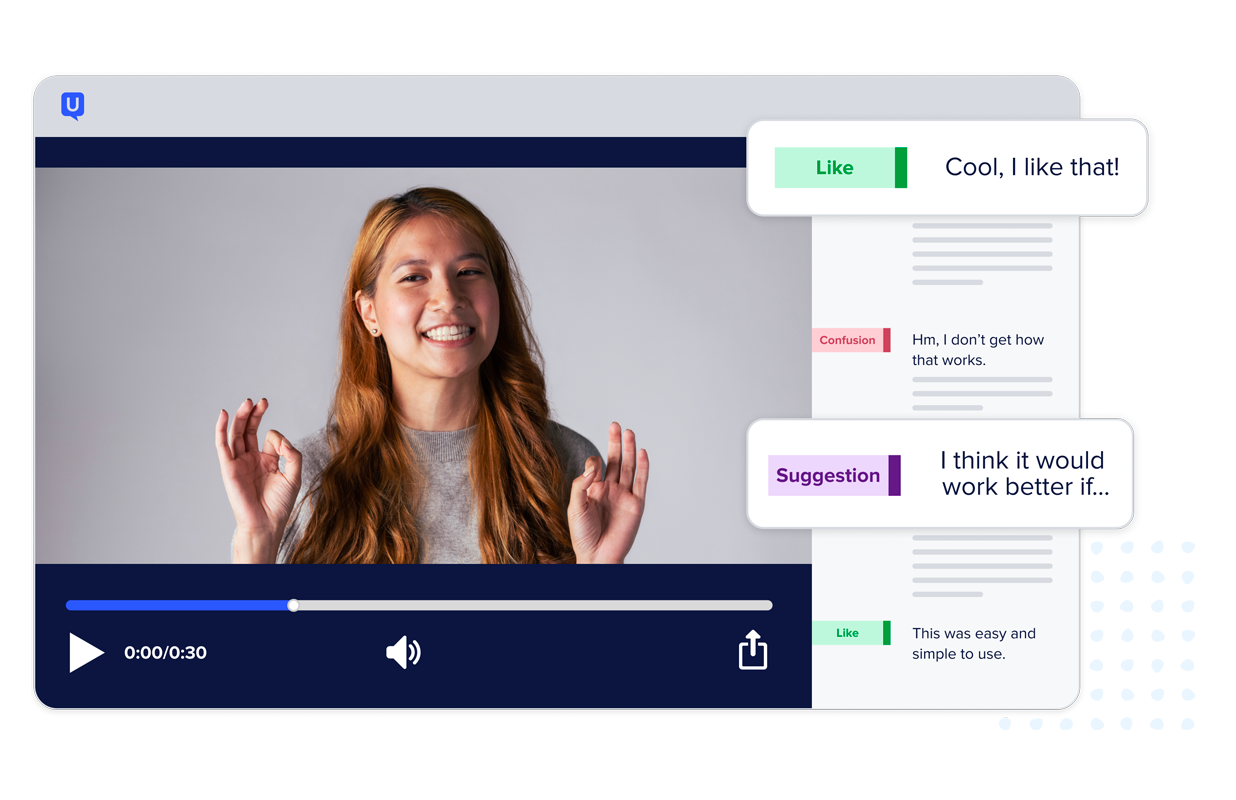
How UserTesting is used at different stages of startup growth

No matter the size of your organization, the ability to quickly gather human insight will always be a vital component of optimizing your customer experience. This is extremely important for startups as they’re in the process of building a reputable name for themselves.
UserTesting can be used in different ways at different scales depending on where the startup is in its growth journey. In this article, we’ll take a look at the different stages of startup growth and how UserTesting can be utilized in each.
Pre-seed
In the pre-seed phase of an organization’s lifecycle, the product offering is often barebones. In fact, it might not even exist yet in a physical form. It could just be an idea in someone’s head.
This period is sometimes called the “friends and family” round because the risk for investors is high. VCs are taking a gamble on the founder and their idea.
Because there’s so much uncertainty for startups in the pre-seed phase, a human insight platform can be an invaluable tool in creating structure and a clear path forward.
One of the most common uses of a human insight platform in this stage is for market validation. It’s important for startups to be able to verify a clear need in the marketplace. And one of the best ways to do that is with thorough research. With UserTesting, organizations can quickly draw upon the participant network to find prospects and test participants for their new product or service.
They can then interview and survey prospects to gain a better understanding of their motivations and challenges. The insights gained from this kind of research might go on to inform product design, branding, features and more.
UserTesting also provides a great resource for helping founders improve their pitch to potential investors. Highlights reels and video footage of participants explaining their challenges or working with a prototype can go a long way in building excitement for an idea.
Seeded
As the name implies, the seed round is the time that organizations will raise the initial sum of money needed to truly take a shot in the market and reach the next level of growth. This is a foundation-building phase. A few essential hires are made, an MVP is launched, and teams focus on iteration and expansion.
To complete this round of funding, investors expect startups to have something to show for themselves. There needs to be tangible evidence of product-market fit and a realistic solution to a challenge that prospects are facing. In this phase, UserTesting is an invaluable tool to help product teams really understand the friction points their customers are facing and improve upon their initial offering.
Consistently gathering feedback allows teams to create an accurate journey map for their customers so that they can start bringing the product experience up to an industry standard. UserTesting is also used to continue market research. Is the chosen brand and messaging for your product resonating? Is your web experience confusing? Is your product ready to scale? These are all questions that can be answered with the right testing protocol.
Establishing a human insight platform at the beginning of an organization’s lifecycle can help ensure that UX research and customer-centricity are a part of the organization’s DNA—a valuable characteristic to have when scaling.
Series A
Startups that reach Series A status have proven they have a product that meets a demand in the marketplace and can satisfy customers. A track record of success has begun and now the focus is on growing the organization into a well-oiled machine. That means the collaboration of design, development, sales, support, and marketing teams—all working toward a common goal of growth and maturity.
During this phase, UserTesting is used to help product teams prioritize multiple customer journeys and experiences. Once a product is out in the marketplace, iteration doesn’t stop. If anything, it speeds up. Design and product teams are constantly working to evaluate new user challenges, brainstorm additional features, and expand their product with the evolving needs of its customer base. Testing directly with existing customers is the best way to quickly discover what needs to be prioritized and what can wait.
At this stage of maturity, UserTesting also becomes useful for tasks like churn analysis. It isn’t enough to find new business. Organizations need to be able to make sure those customers stay satisfied and renew. This brings forth a whole new dimension of potential surveys, tests and interview opportunities.
Series A organizations are no longer the tiny startups they once were. Teams grow, creating a greater diversity of opinions on strategy, prioritization, marketing, and everything else. One of the best ways to keep the team on track is by backing up decision-making with verifiable customer insights. UserTesting can be used as a tool to help executive teams get unstuck when facing a complicated product, marketing, or sales decision.
Series B
Series B organizations are well-established and more secure than previous iterations. It’s during this phase that UserTesting can be effectively used by many departments for an almost-infinite variety of applications
This phase could present an opportunity for organizations to start using UserTesting for their own teams and experiences, optimizing internal processes involved with HR, sales, marketing and other departments. When organizations become successful and reach this phase of growth, it’s common for the competition to start heating up.
A startup may have surprised the market with a valuable new idea. But now that its success has been proven, others will start to create similar products and try to build something even better. UserTesting can be used to stay ahead of the competition by continuously testing experiences against competitors to stay best-in-class.
For the most part, UserTesting at Series B organizations is used similarly to earlier stages, but on a larger scale. As organizations grow, so do their number of digital touchpoints, public-facing experiences, and campaigns. That means even more testing opportunities for optimization. By disseminating customer feedback to different sectors of these larger organizations, departments can become united in their understanding of the customer and their needs. Ultimately, the organizations that can maintain an intimate understanding of their customers have the best chance of long-term success.

Unlock your customer insight ROI
Discover the hidden ROI of your customers' insights. Book a meeting with our Sales team today to learn more.





